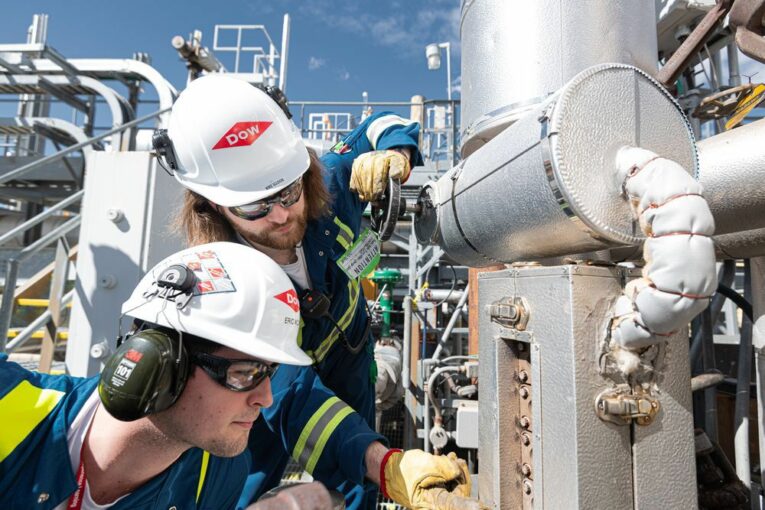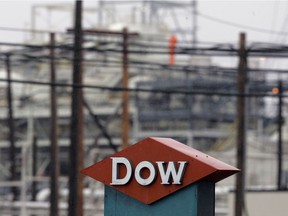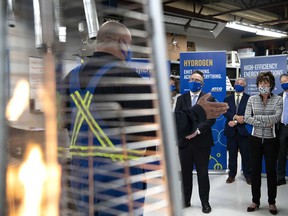
For all of the hand-wringing about the state of Alberta’s energy industry, two announcements this week provide a glimpse at what the future can look like — if the province and industry can seize the opportunity in front of it.
The future looks cleaner and greener, with massive investments flowing into technology and new projects needed to produce low-emissions energy and other products.
On Wednesday, Alberta’s dream of becoming a petrochemical powerhouse took another step forward as Dow Inc. announced plans for the “world’s first net-zero carbon emissions” ethylene cracker and derivatives complex, which could cost $10 billion or more to complete.
The next day, Calgary-based TC Energy unveiled plans with electric truck manufacturer Nikola Corp. to co-develop and operate large-scale hydrogen production hubs in North America.
These follow a spate of announcements from companies such as Suncor Energy, ATCO, Air Products, Petronas, Mitsubishi, Shell and Pembina Pipeline to embrace the energy transition. They’re eyeing proposed Alberta investments in areas such as hydrogen, as well as carbon capture, utilization and storage (CCUS) developments.
“All of these announcements have the potential to really drive the Alberta economy,” Canada West Foundation CEO Gary Mar said Friday.
“It’s the dawn of a new age for energy. And it’s a clean energy, and that’s very positive for the environment and positive for Alberta.”
The move by Dow to expand its existing petrochemical operations at Fort Saskatchewan is expected to trigger thousands of construction jobs and hundreds of permanent positions, although the company hasn’t disclosed such specifics or a price tag.
Its existing facilities northeast of Edmonton already employ about 1,200 people.

For years, the province has been seeking big-ticket investment for at least one new ethane cracker, which converts raw ethane into ethylene, used as an input in plastic manufacturing.
The Dow development will more than triple the existing ethylene and polyethylene capacity of its Alberta facility by 2030.
The project will convert off-gas into hydrogen, which will be used for fuel in the production process. Carbon dioxide captured on-site will be moved through the existing Alberta Carbon Trunk Line.
“All of our customers are asking for more information about how our products impact their CO2 footprint,” Dow CEO Jim Fitterling said Wednesday at the company’s investor day.
“It’s a no-regrets move to do what we’re doing in Alberta. It will be structurally advantaged and low cost.”
The U.S. chemicals maker cited a number of reasons for deciding to invest in Alberta, including ample supplies of low-cost feedstock.
Industry analysts have mused the project would cost more than $7.5 billion and potentially over $10 billion once all of the phases are included.
Steve Lewandowski, vice-president of olefins for energy consultancy IHS Markit, pointed out demand for ethylene is growing by three to four per cent annually. With governments adopting lower emissions targets, moving the entire facility to net-zero emissions with new technology makes sense.
“From a feedstock perspective, we always felt there was extra ethane available to build” in Alberta, said Lewandowski. “Other competitors were looking at doing things and Dow was the first mover to gain access to that extra ethane.”
A company official said the development is expected to be operating by 2030. A final investment decision is still required from Dow’s board, along with approval from regulators.
“This is a historic announcement,” Dale Nally, Alberta’s associate minister of natural gas, said Wednesday in an interview. “They are confirming we are a hub for clean innovative technologies.”
Richard Masson, an executive fellow with the University of Calgary’s School of Public Policy, said Dow’s announcement sends a signal.
“Dow is essentially saying that we believe there will be an economically viable supply of methane, which comes from natural gas, for the next 30 or 40 years,” Masson said. “That’s a big statement.”

While the Dow announcement has plenty of sizzle, given its potential size, the TC announcement with Nikola is also noteworthy.
Phoenix-based Nikola makes heavy haul trucks that are battery-electric powered and also hydrogen-electric powered.
The agreement with TC Energy will see the companies work together to deliver low-carbon hydrogen to hubs along truck corridors that serve Nikola’s vehicles.
Corey Hessen, TC Energy’s president of power and storage, said Friday both businesses are looking at how they can “marry two sets of expertise that are required for the hydrogen economy going forward.”
The companies are examining how the hubs can work, what infrastructure is needed and how it can service the trucking industry, although it’s too early to discuss potential costs, he said.
This week’s announcements are another sign of the shift taking place in Alberta’s energy industry, which has faced pressure in recent years from decarbonization and ESG considerations as Canada aims to achieve net-zero emissions by 2050.
While interest in massive new greenfield oilsands projects has waned, investments in proposed hydrogen and CCUS developments are being studied.
For example, TC Energy teamed up with Calgary-based Pembina Pipeline earlier this year on plans to create a carbon transportation and sequestration grid in the province.
Hessen said the energy transition is evolving quickly, noting changes will be driven by the demands of customers who need safe, reliable and cost-effective energy.
“We have an all-of-the-above strategy, meaning that the energy transition is, in fact, a journey,” he added. “So there’s a long-term place for natural gas and there’s a long-term place for wind and solar.
“As time goes by and our customers’ demands change … and you get more economic signals from the marketplace that these are the types of products our customers are looking for, it’s inevitable that it will happen.
“I just can’t tell you what the timing is or how long it will take.”
Chris Varcoe is a Calgary Herald columnist.
You can read more of the news on source

